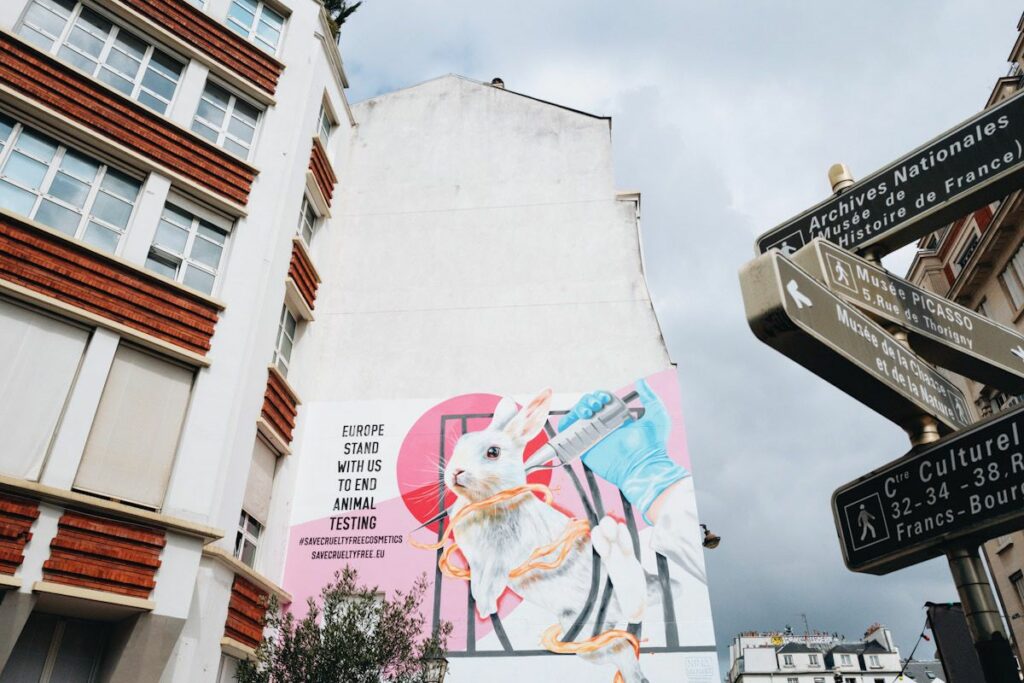“The Queen has been dreadfully shocked.”
These words were sent in a letter written by Queen Victoria’s private secretary in 1875. According to the note, addressed to Joseph Lister (who, at the time, was working as Professor of Surgery at the University of Edinburgh), the English monarch had serious concerns regarding the use of animal experimentation in scientific research. She was “most anxious to put a stop” to practices that involved injecting, operating on, and force-feeding animals in the name of scientific progress.
It only took a century for Queen Victoria’s humanitarian wish to be granted—mostly. In 1998 — amid mounting public pressure and increasing media attention on animal rights protests — the UK passed a groundbreaking ban against animal testing for cosmetic purposes. But now it appears the country could be going backward. New regulations could allow cosmetic animal tests to take place once again.
To understand how we’ve got to this point, let’s look at the history of animal testing and where we are in modern science right now.
The cruel reality of cosmetic animal testing
In medical and cosmetic research, animal testing involves performing invasive procedures on animals to test for a reaction to drugs and chemicals. In the cosmetics industry, the most common animals used for testing are guinea pigs, rabbits, rats, and mice. They may have chemicals rubbed on their skin and eyes, injected into their bodies, or they could be forced to eat or inhale substances. According to the Humane Society International, globally, around 500,000 animals die in cosmetic testing every year.

Why did cosmetic animal testing start?
Animal testing for scientific purposes is far from new. It actually predates Queen Victoria’s time and goes all the way back to Ancient Greece. (Aristotle was one of the first documented academics to perform experiments on living creatures.) But back then, animal tests were primarily conducted on medical grounds. It wasn’t until the early 20th century that cosmetic animal tests started to become commonplace.
This was largely to do with the U.S. Food and Drug Administration (FDA)’s passing of the 1938 Federal Food, Drug, and Cosmetic Act, which mandated cosmetic animal testing on beauty products. Many factors prompted the legislation, but one renowned case is that of Lash Lure. In the 1930s, several women were blinded after applying the mascara because it contained untested p-phenylenediamine. (For some, the chemical causes severe allergic reactions involving blisters, ulcers, and abscesses.)
But since the early 20th century, science has progressed significantly. “We’re at a point in science now that would have been science fiction not that long ago,” says Dr. Jarrod Bailey, former Science and Technology Director at the Center for Contemporary Sciences and current Science Director at Animal Free Research UK. “It’s astounding what we can do.”
Now, he explains, we can protect humans from adverse reactions with multiple effective, reliable, and humane alternatives to animal testing. Not only can modern researchers actually grow human cells for testing in the lab, but computational biology is also rapidly advancing. (This is when scientists use existing data to accurately model the reactions of new drugs and chemicals.)

Changing opinion & legislation
It’s not just a growing number of scientists who are against animal testing. Public opinion is too. And it has been for some time. While attitudes against the practice were brewing in the Victorian era, they were generally limited to the aristocracy. But in the 1970s and 1980s, with more readily available media coverage and literature, the animal rights movement became accessible to more people and started to gain traction. Ultimately, this helped lead to the UK’s 1998 ban on cosmetic animal testing.
But now, thanks to a regulation called Registration, Evaluation, Authorisation, and Restriction of Chemicals (REACH), it seems the UK is about to pivot its policy. This regulation, implemented by the European Chemicals Agency (ECHA), requires that in order to protect workers during the manufacturing process, some substances (including a number of cosmetic ingredients) must be tested on animals.
REACH directly contradicts the European Union (EU)’s animal testing ban and means that despite the rules against it, in some instances, animal testing for cosmetics can still be conducted legally throughout the EU (and is, confirms a new study). Now that the UK has left the EU, it is planning to implement its own copycat version of REACH.
“It has abandoned its 1998 policy ban,” Cruelty Free International’s director of public affairs Kerry Postlewhite confirms, after stating that the nonprofit was “disappointed and concerned” with the UK Home Office. “This policy departure destroys the gold standard UK animal testing ban for cosmetics and their ingredients.”
Postlewhite also explains that, like in the EU, the change will not be open to public scrutiny. Instead, it will “take place behind closed doors, without opposition or challenge.”
Some scientists have built their whole reputations and careers on a particular way of doing things. They don’t want to admit they’re wrong.
But, why, if there are alternative methods that are more ethical and more accurate than animal tests that have pre-Victorian era roots, are we still using the latter? Bailey says there are a few reasons. And in his view, none of them are to do with progression in science.
“In this particular area of science, you have people who have built their whole reputations and careers on a particular way of doing things,” he says. “They don’t want to admit that what they’ve done has been a waste of time. They don’t want to admit they’re wrong. They don’t want to be told they’re wrong.”
But for industry giants and regulatory bodies, it’s also to do with protection. It’s a box-ticking exercise, adds Bailey. “When you have chemicals in cosmetics, you have big regulatory agencies that are responsible for testing and for showing the likelihood of safety and risk,” he explains. “If they get it wrong, the buck stops with them. They’re frightened to some degree of making moves to change things.”

Progress on cosmetic animal testing
But elsewhere in the world, things are changing.
There are now six states in the U.S. with cosmetic animal testing bans, and Mexico just became the first country in North America to totally ban the practice. In China, where more animals are used in research than anywhere else in the world, things are changing too. As of May this year, imported cosmetics are no longer subject to animal tests. (Previously, to sell in China, brands had to agree to the possibility of animal testing on their products.)
By 2035, the U.S. Environment Protection Agency also intends to completely phase out animal testing. (A move that former EPA Administrator Andrew Wheeler said was to do with scientific advancements.) And, nearly a century after it helped make cosmetic animal testing mainstream, the FDA is now openly inviting experts on alternatives to come and work with them.
“There’s a lot to be optimistic about,” said Bailey. “But the pace of change still needs to be accelerated considerably. And that’s my job and the job of people like me who work in this field and are trying to push things along as quickly as they should be going.”


